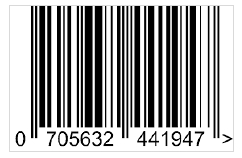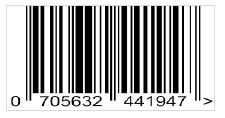
 Data Structure
Data Structure Networking
Networking RDBMS
RDBMS Operating System
Operating System Java
Java MS Excel
MS Excel iOS
iOS HTML
HTML CSS
CSS Android
Android Python
Python C Programming
C Programming C++
C++ C#
C# MongoDB
MongoDB MySQL
MySQL Javascript
Javascript PHP
PHP
- Selected Reading
- UPSC IAS Exams Notes
- Developer's Best Practices
- Questions and Answers
- Effective Resume Writing
- HR Interview Questions
- Computer Glossary
- Who is Who
What are the differences between RFID and Barcode?
Let us understand the concepts of Radio-Frequency Identification (RFID) and Bar code before learning the differences between them.
Radio-Frequency Identification (RFID)
RFID is a small electronic device which has a small chip and an antenna. This chip generally carries 2,000 bytes of data or less.
It works the same as a bar code or a magnetic strip on the back of a credit card or ATM card providing a unique identifier for the object. The RFID device is just like a barcode or magnetic strip used to scan to retrieve the identifying information.
It is one of the wireless non-contact uses of radio-frequency electromagnetic fields to transfer data, for identifying and tracking tags attached to objects automatically. The tags have electronically stored information. Some tags are powered and read at short ranges through magnetic fields.
Some are used as a local power source like a battery, or else have no battery but collect energy from the interrogating EM field, and work as a passive transponder to emit microwaves.
Battery powered tags can operate at hundreds of meters. The tag does not need to be within line of sight of the reader, and it can be embedded in the tracked object.
Bar Code
A bar code reader decodes the data contained in the barcode and sends it to the computer. It produces a beam of light or a laser beam to read barcodes which is reflected by the bar code image.
A light sensitive detector which is present in the reader identifies the bar code by recognizing special bars on both ends of image. With the help of these special bar’s reader is able to identify whether the bar code has been read right side up or upside down.
Once a barcode is identified by a bar code reader it decodes it and converts the individual bar patterns into numeric digit code that can be read by computer, After decoding the barcode it enters that data into computer as a text.
Given below is the sample image of bar code −

Differences
The major differences between RFID and bar code are as follows −
| RFID | Bar Code |
|---|---|
| RFID Invented in 1983 by Charles Walton | Bar Code was developed in 1952 by Norman Joseph woodland. |
| RFID is based on radio frequency | Barcode is based on optical technology. |
| In RFID memory storage is possible. | In Barcode memory storage is not possible. |
| RFID is more resistant than barcode. | Barcodes are less resistant than RFID. |
| More RFID tags reads are allowed at a time. | Single barcode can be scanned at a time. |
| RFID processes faster than Barcode. | Barcode is slower than RFID |
Given below is the sample image of RFID: 
|
Given below is the sample image of Bar code: 
|

